Manual leveling is tedious and repetitive, and you’d much rather automate all the boring stuff and get to 3D printing. While most 3D printers auto-level now, some still don’t – so here’s the top auto-leveling 3D printers you can buy at an affordable price in 2024:

Anycubic Kobra
One of the cheapest self-leveling printers around.
Performed well in our review.
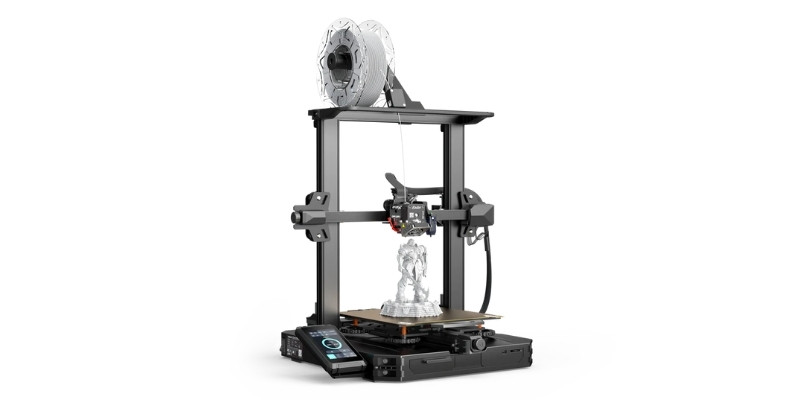
Creality Ender 3 S1
Builds on Ender 3’s success with extra power and auto-leveling
Improved direct drive extruder
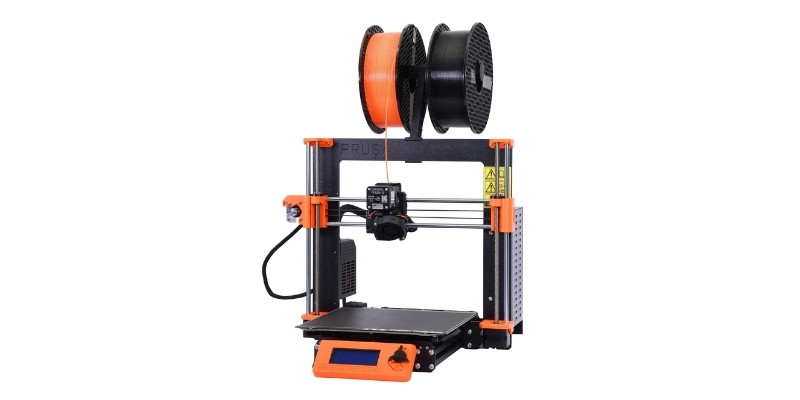
Prusa i3 MK3S+
One of the best 3D printers for $1000 with great auto-leveling
Durable, accurate, it’s perfect
Quick Overview
- Anycubic Kobra: Best budget pick
- Flashforge Adventurer 3 Lite: Best enclosed low-cost option
- Anycubic Vyper: Similar to Kobra but slightly upgraded (but costs extra)
- Ender 3 S1: Best auto-leveling 3D printer under $500
- Prusa i3 MK3S+: Best for $1,000
- Ultimaker S3: Best for professional use, or if budget is no issue for you
3DSourced is reader-supported. When you buy through links on our site, we may earn an affiliate commission. Learn more
Most Popular Auto-Leveling Upgrade Kits
- BLTouch — Available on Amazon here
- CRTouch — Creality’s version — Available at Creality here / Amazon here
- EZABL
These kits come with firmware, such as Marlin, which when placed where your printer’s z-stop is, learns the height of the build plate, and makes adjustments based on these measurements.
The Best Auto-Leveling 3D Printers
1. Anycubic Kobra – cheapest auto-leveling 3D printer
- Price — Check latest price at Anycubic here / Amazon here
- Automatic Bed Leveling: Anycubic LeviQ
- Leveling Points: 25 points
- Build Volume: 220 x 220 x 250 mm
- Minimum Layer Height: 50 microns
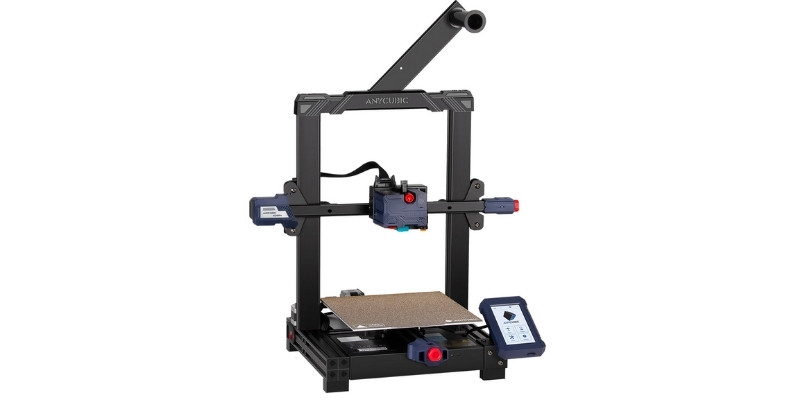
Pros
Cheap printer with auto-leveling, and known for its reliability.
Direct drive extruder makes for better flexibles printing if you plan to 3D print TPU filamaent.
Cons
No WiFi features.
Smaller z-height than alternatives like Ender 3 S1 and Ender 3 S1 Pro.
The Anycubic Kobra is the cheapest 3D printer with a self-leveling bed around and a thrifty way to get all the time-saving benefits at a price that won’t scare away 3D printing novices. Launched in early 2022, it’s a machine designed to make 3D printing easier for newcomers by removing the more hands-on aspect of setup and tinkering.
Anycubic has equipped the Kobra with its in-house developed mesh point ABL 3D printing system, the LeviQ. It measures the bed at 25 distinct points, stores the data, and adapts the printing process to mitigate surface inconsistencies.
We had the chance to spend some quality time with the Kobra, and we couldn’t have been more impressed with the Levi Q system. The probe automatically levels the bed in just a few minutes with a single click. You can also fine-tune Z offset on the fly to get those flawless layers, thanks to an easily accessible setting in the intuitive display UI.
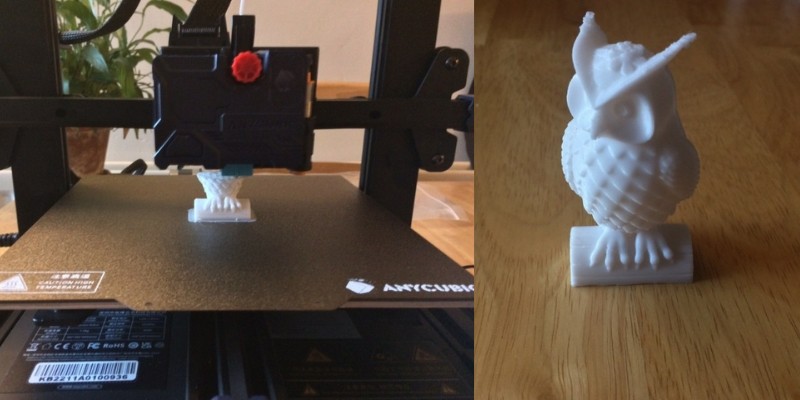
Elsewhere, the Anycubic Kobra has features we’ve rarely seen at this price. There’s a smart direct drive extruder, Anycubic excellent coarse PEI-coated removable magnetic bed, and a well-sized 220 x 220 x 250 mm build volume, all housed in a compact machine that won’t take up too much space.
Specifications are one thing, but the Anycubic backs them up with solid quality prints out-of-the-box. As with most budget printers, there’s some software tinkering involved to get the very best results, but once there, the Anycubic positively sings when fed PLA, TPU, and PETG.
In many ways, the Anycubic Kobra has redefined what we should expect from low-cost printers and, for our money, is hands down the best 3D printer under $300 currently on the market.
2. Flashforge Adventurer 3 Lite
- Price: Check latest price at Flashforge here / Available on Amazon here
- Build volume: 150 x 150 x 150
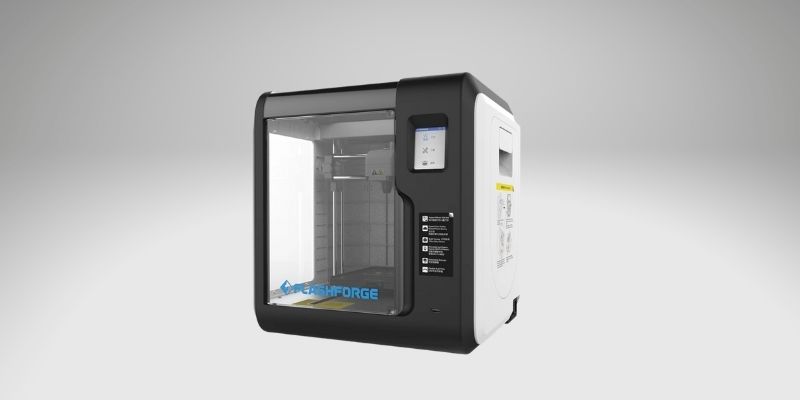
Pros
Reliable, beginner-friendly printer, and enclosure makes it safe to use around kids who might touch the hot end during printing.
Wi-Fi connectivity as well as auto-leveling: 2 uncommon features in this price range.
Cons
Small build volume: only 150 x 150 x 150 mm.
If you’ve got younger kids that you want to get involved in 3D printing, the Adventurer 3 Lite is perfect. It’s enclosed, so it keeps any curious child’s hands safely locked away from the nozzle while printing, with this enclosure also benefiting your prints as you can more effectively control the temperature, and reduce warping.
The Flashforge Adventurer 3 Lite is one of the cheapest 3D printers with auto-leveling, another feature that makes it ideal for beginners or kids, letting you skip all the hassle and get straight to the fun printing. The removable heated bed makes it easier to remove prints after printing, and despite its appeal as a basic, easy-to-use printer, it can still print tougher filaments like PETG.
It also comes with a filament run-out sensor, switching off automatically in the event of a power cut or similar failure, pausing your print so you can resume without ruining your model, and it’s very quiet, so it won’t disturb you too much if you’re working or relaxing in the same room.
3. Anycubic Vyper
- Price: Check latest price at Anycubic here / Available on Amazon here
- Build volume: 245 x 245 x 260 mm
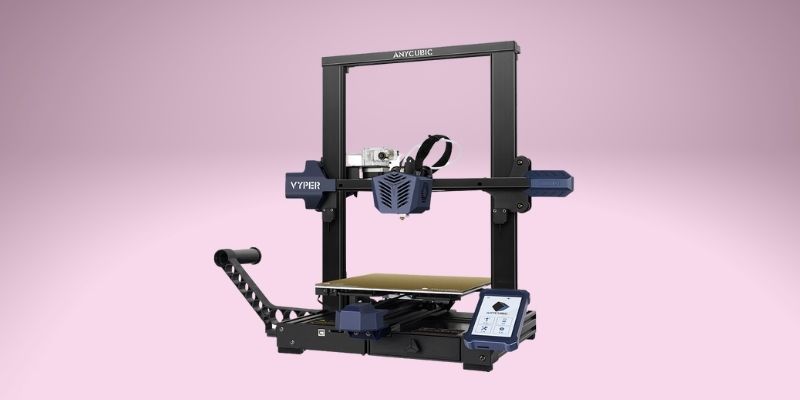
Pros
Quick assembly: I built my Anycubic Vyper in under 30 minutes.
16-point auto-leveling system (not common in this price range).
Excellent fan cooling system.
Cons
Noisy: not ideal for all-night printing if you live in a small apartment.
Another low-priced self-leveling 3D printer, the Anycubic Vyper’s 1-click auto-leveling system automatically adjusts based on the data gained from each of 16 different points across the print bed to optimize printing.
Despite the large build volume, it’s a compact printer that doesn’t take up too much space, and when we recently tested the Anycubic Vyper we were impressed with the print quality. Though we didn’t run it too fast, Anycubic say that with the Vyper’s new fan cooling system you can print faster without a noticeable loss in print quality — at up to 100mm/s.
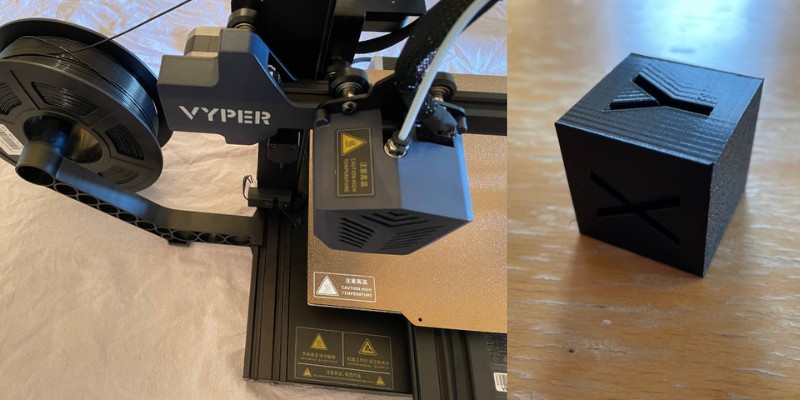
The new 32-bit motherboard and control chip makes it more powerful than previous Anycubic 3D printers, making for better precision and quieter printing. The large 4.3-inch touchscreen is a nice bonus, and the UI is easy to use to get printing and change each setting.
Another great feature is the new and improved double gear extrusion system within the extruder, making flexible filaments like TPU easier to print and prevents tangling, and also makes standard PLA printing more reliable.
Overall, we were impressed when we tested the Anycubic Vyper, and if you’re looking for a high-quality 3D printer that auto levels for a good price, this could be the one for you.
4. Ender 3 S1 / S1 Pro
- Price — Check price at Creality store here / Amazon here
- Automatic Bed Leveling: Creality CR Touch Auto Leveling
- Leveling Points: 16 points
- Build Volume: 220 x 220 x 270 mm
- Minimum Layer Height: 50 microns
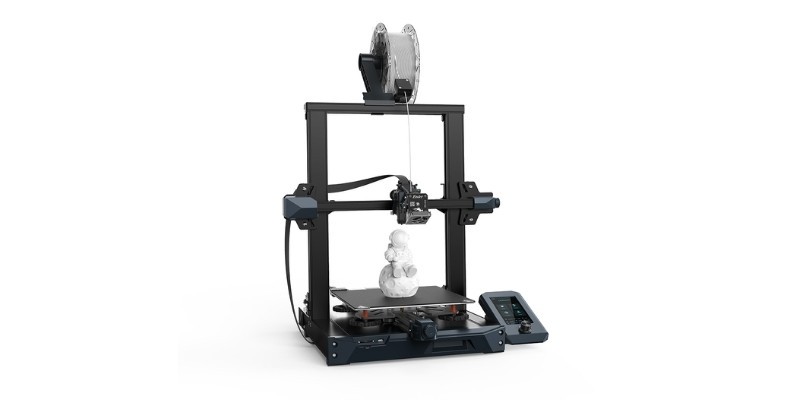
Pros
Effective 16-point auto-leveling system.
First Ender 3 model to get auto-leveling.
Direct drive is easier to use than the original Ender 3 and Ender 3 V2.
Cons
Consider upgrading to the Ender 3 S1 Pro for a metal hotend and higher max temperatures.
More expensive than comparable printers like the Anycubic Kobra.
Emerging from one of the longest-running and best-selling 3D printing legacies, the Ender 3 S1 is the new, more sophisticated version of the Ender 3 – with two versions, the Ender 3 S1, and S1 Pro, with subtle differences.
In our review of the Ender 3 S1 Pro, we noted how Creality has gone to considerable lengths to make the printer a tinker-free, set-and-forget incredibly welcoming to beginners, and improved a number of key areas.
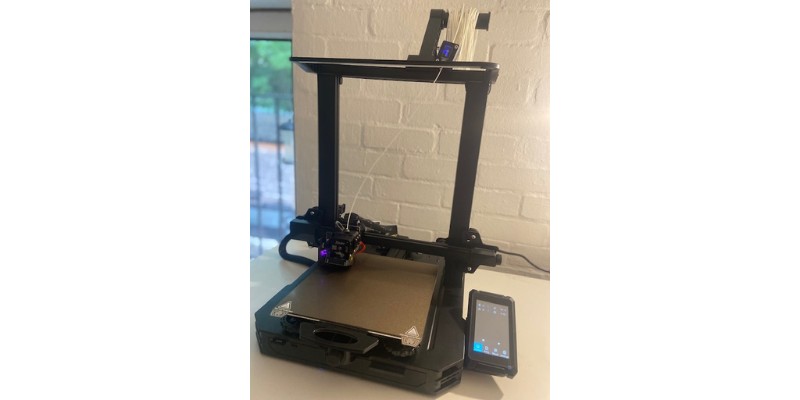
Both the Ender 3 S1 and S1 Pro have key upgrades, such as automatic bed leveling – a first for the Ender 3 family. Creality has used its self-developed BLTouch look-alike, the CR Touch.
It measures 16 points across the bed to provide the printer with all the data needed to compensate for different surface heights and deliver optimal printing. Unlike some automatic bed leveling systems, the CR Touch keeps its calibration sharp and trim even after multiple prints.
Of course, you could always buy an Ender 3 for dirt cheap and install a CR Touch yourself. It would be a viable option if it weren’t for the stacks of extra features found on the S1.
The Sprite dual-gear direct drive extruder is worth mentioning, as is the fantastic PC spring steel sheet, sleek LCD, extremely quiet 32-bit motherboard, and a larger 270mm maximum print height (vs 250mm on the Ender 3).
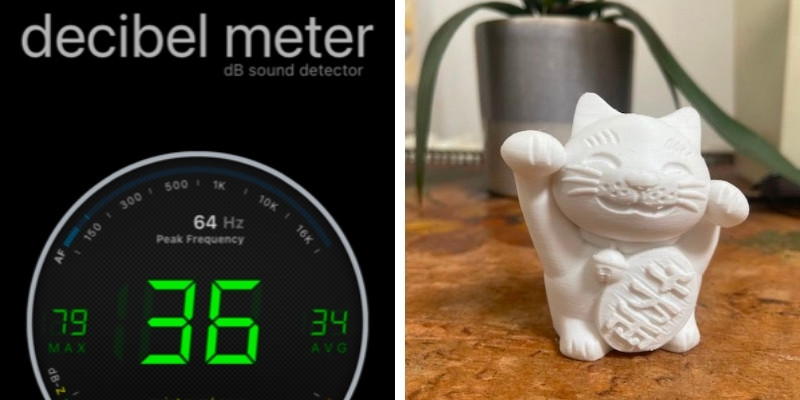
The Ender 3 S1 does cost more for all these upgrades, so whether the extra features are worth the additional spend comes down to budget and convenience. The Ender 3 is still one of the top budget picks, but you’ll have to invest time, effort, and money to spruce up to anything comparable to the Ender 3 S1.
And if you’re deciding between the S1 and S1 Pro for an auto-leveling 3D printer under $500, this really depends on what you want to print. The S1 Pro has an all-metal direct drive extruder that can reach 300°C, so if you want to print high-temp filaments like Nylon or PC, absolutely go for the S1 Pro. If not, you might be fine with the standard S1.
It’s also worth noting that the brand-new Ender 3 Neo range also now come with auto-bed leveling, so it’s more a question of whether you want the other upgrades on the S1 range.
5. Prusa i3 MK3S+ — reliable auto-leveling 3D printer
- Price: Varies — Available on Prusa Store here or on Amazon here / Assembled available on Prusa Store here or on Amazon here
- Build volume: 250 x 210 x 210 mm
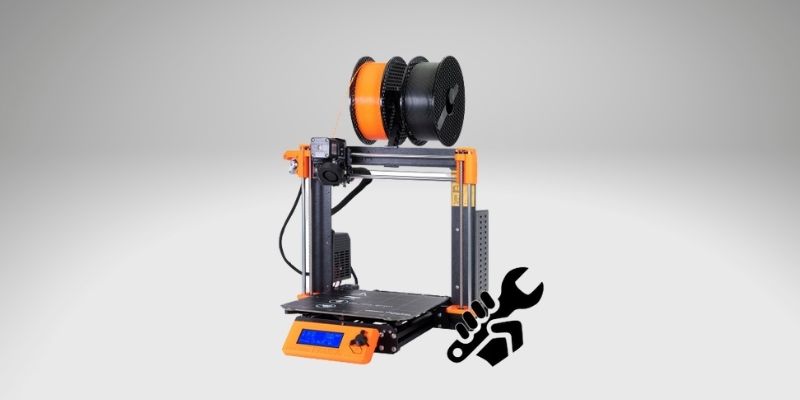
Pros
One of the world’s most reliable printers, unlikely to cause new makers a headache
Very accurate
Comes with auto-levelling and many other features that save you time and hassle
Cons
Takes a long time to build (we recommend buying the pre-built version for $200 more instead)
More expensive than many new makers would want to spend
Prusa printers have been known as the most reliable, hassle-free, and high-quality 3D printers around for years, winning boatloads of awards and selling hundreds of thousands of 3D printers.
The latest version, the i3 MK3S+, comes with improved first layer calibration via the new SuperPINDA probe, and a range of other key design improvements. The automatic mesh bed leveling is flawless and keeps everything optimized, and the print platform’s removable PEI spring steel sheets make it easy to remove your finished prints without having to strain and risk damaging your print while scraping it off the bed in an awkward position.
Other quality-of-life features include the filament runout sensor, power loss recovery to save where you are in your print, key safety features, and it’s very quiet while printing.
Prusa printers are also open source, so you can use third-party filaments, and the i3 MK3S+ is powerful enough and can reach high enough nozzle temperatures to print filaments like ASA, Polypropylene, Polycarbonate, HIPS, Nylon, and carbon filled filaments, beyond the standard ABS and PLA.
Overall, if you’ve got the extra money to spend, go for the Prusa and you won’t be disappointed.
6. Ultimaker S3 – premium auto-leveling option
- Price: $4,080 — Available on Dynamism here / Available on Matterhackers here
- Build volume: 230 x 190 x 200 mm
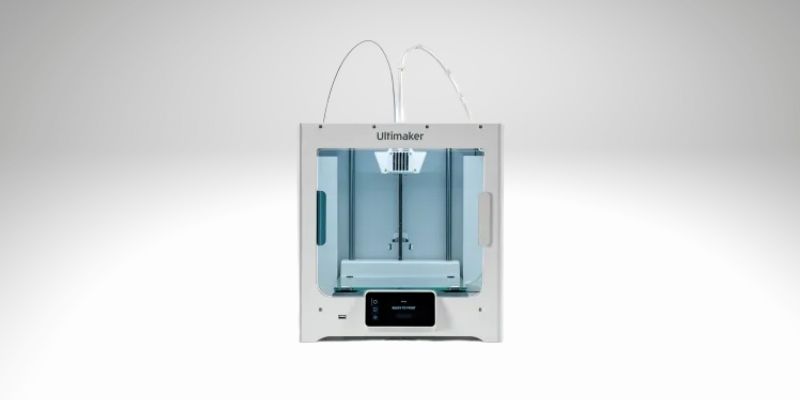
Pros
Extremely high quality and precise.
Dual extrusion options for multi-material printing and prototyping.
Cons
Slow print speed: not ideal if you plan to sell printing services.
The premium, high-quality auto-leveling 3D printer option, the Ultimaker S3 guarantees a hassle-free printing experience. Designed for prototyping and for business use, the S3 features advanced auto bed leveling via automated calibration settings. These settings measure the build platform’s coordinates and automatically adjust without you needing to manually intervene — it’ll just stay level and optimized.
It’s also a dual extruder auto-leveling 3D printer, so you can print with PVA and PLA for dissolving filaments, as with HIPS and ABS, and a range of other filaments.
The Ultimaker S3 is also incredibly accurate, able to print precise parts of up to 20-micron resolutions. At this level of precision, it’ll be slow, but the results will be fantastic. It’s expensive and usually reserved for more professional 3D printing, but functions fantastically as an auto-leveling printer for a range of uses.
What is an auto-leveling 3D printer?
An auto-leveling 3D printer is one that comes equipped with the necessary kit (sensors) to automatically detect the distance between the nozzle and the print bed.
Prior to auto-leveling, makers worldwide had to manually adjust their 3D printer’s bed so it was at the correct distance away from the nozzle. This was time-consuming, annoying, and put beginners off. Moreover, you’d have to re-level your 3D printer every few prints as the bed began to fall out of alignment over time.
Having a self-leveling 3D printer saves you time and hassle, so you can get to doing the fun things like printing your favorite models.
These auto-leveling printers have proximity sensors near the tip of the nozzle and detect where the print bed is across various points on the print bed. For example, the Creality CR-10 Smart has 16 points spaced evenly across the print bed that the nozzle probes to get distance data.
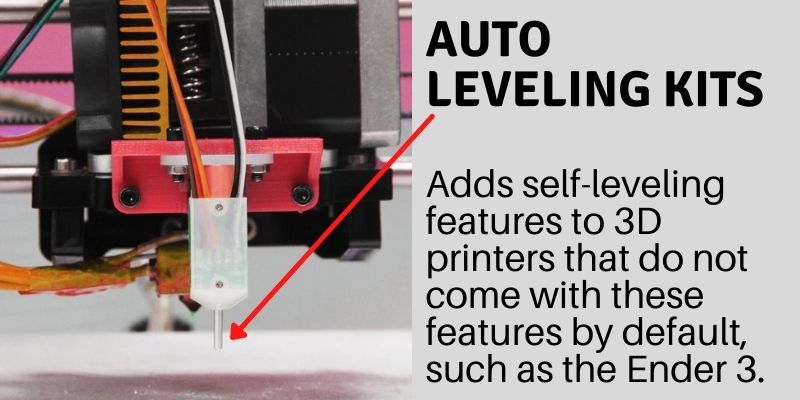
With this data, the 3D printer’s firmware can make adjustments on the distance the nozzle comes to the print bed during the 3D printing process.
For example, if one side of the print bed is slightly uneven, the printer adjusts to this and ensures that the nozzle and bed remain the same distance apart throughout the print, improving bed adhesion and print quality.
Generally, the ideal distance between the printer nozzle and bed is around 0.1mm, but this can vary.
Problems that can occur if the nozzle is too close to the print bed include:
- Scratch marks on the print bed
- Filament will be unable to extrude, especially in the first few layers
- Can clog your nozzle
Problems that can occur if the nozzle is too far away from the print bed include:
- Bad adhesion
- Filament will curve and twist around the nozzle rather than being deposited
- Poor print quality
Either way, badly optimized bed leveling causes bad adhesion and worse print quality, so it’s key to do this properly. Even with an auto-leveling 3D printer, it can be worth manually calibrating everything every once in a while to ensure your settings are spot on.
What are the advantages of a 3D printer with automatic bed leveling?
- Better print quality and bed adhesion
- More accessible for less experienced beginners
- Saves you time and hassle manually leveling the 3D printer
- Human error can affect manual leveling
Therefore, a level print bed is crucial for high-quality prints. If you’re trying to avoid constantly ruined, sloppy-looking prints caused by poor layer adhesion, go for a self-leveling 3D printer.
Do 3D Printers Need Auto Leveling?
No, 3D printers don’t strictly need auto bed leveling, but it’s a helpful feature to have because it removes the need to manually level the bed, which can be both time-consuming and frustrating for beginners.
FAQs
What are the best self-leveling bed sensor kits?
The BLTouch auto-leveling sensor probe is a widely used and highly-rated self-leveling 3D printer kit, which is compatible with many different printers and brands. Creality also sell their own version, the CRTouch, and there are other options also.





